I am using the code below and it works for filtering the unique name and totalting the value field. I recently have a need to expand upon the filtering of unique names to include other columns in the criteria. Please see the example output I am looking for. Any help would be appreciated.
Sub SUM()
Dim i, j, k As Integer
i = 2
j = 2
Range("D1").Value = "NAME"
Range("E1").Value = "VALUE"
'copy the first value of column A to column D
Range("D2").Value = Range("A2").Value
'cycle to read all values of column B and sum it to column E; will run until find a blank cell
While Range("A" & i).Value <> ""
'this check if actual value of column A is equal to before value of column A, if true just add the column B value to E
'else, look for the row in column D where is the same value of column A, if it doesn't exist code create the value
'in column D and E
If Range("A" & i).Value = Range("A" & i - 1).Value Then
Range("E" & j).Value = Range("E" & j).Value + Range("B" & i).Value
Else
flag = 1
While Range("D" & flag).Value <> ""
If Range("A" & i).Value = Range("D" & flag).Value Then
j = flag
Range("E" & j).Value = Range("E" & j).Value + Range("B" & i).Value
flag = Range("D1").End(xlDown).Row
Else
j = 0
End If
flag = flag + 1
Wend
If j = 0 Then
Range("D1").End(xlDown).Offset(1, 0).Value = Range("A" & i).Value
Range("E1").End(xlDown).Offset(1, 0).Value = Range("B" & i).Value
j = Range("E1").End(xlDown).Row
End If
End If
i = i + 1
Wend
MsgBox "End"
End Sub
Currently outputs like this:
Name Value Name Sum
A 1 A 13
A 2 B 7
B 1 C 3
B 3
C 2
A 1
B 2
A 3
B 1
A 2
A 4
C 1
I would like to have it export data like this example:
Name Code Date Value Name Code Date Sum
A 101 3/10/17 1 A 101 3/10/17 9
A 101 3/10/17 2 A 102 3/10/17 4
B 102 3/10/17 1 B 101 3/10/17 3
B 101 3/10/17 3 B 102 3/10/17 2
C 102 3/8/17 2 B 101 3/8/17 2
A 102 3/10/17 1 C 102 3/8/17 2
B 101 3/8/17 2 C 102 3/10/17 1
A 102 3/10/17 3
B 102 3/10/17 1
A 101 3/10/17 2
A 101 3/10/17 4
C 102 3/10/17 1


